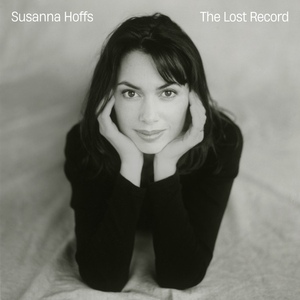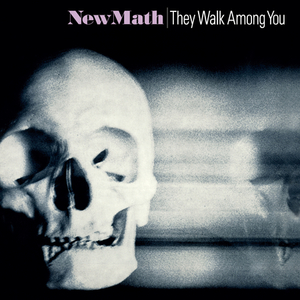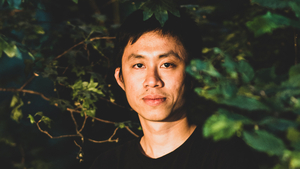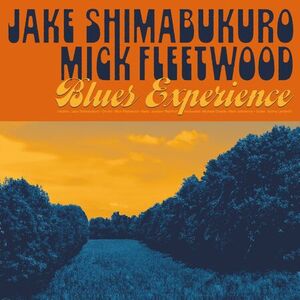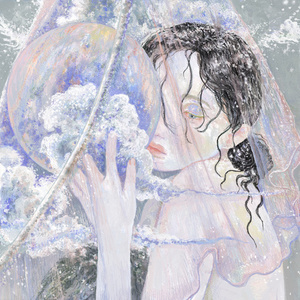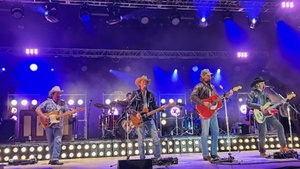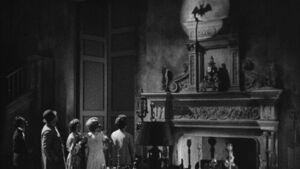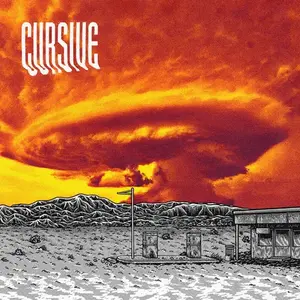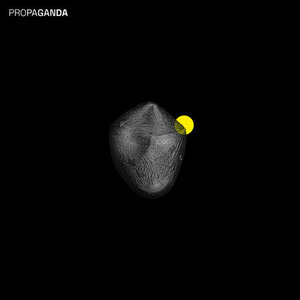Glenn Kotche
Matt Wellins
Simon Joyner, Jim O’Rourke, On Fillmore, Birddog, and now Wilco are all unified by the percussion of Glenn Kotche, one of the more adventurous, consistently exciting drummers in recent memory. His new solo releases, Introducing on Locust, and Next on Quakebasket, confirm Kotche’s relentless experimentation and skilled ears. I had a chance to talk to him via email about his newest work and his otherwise bustling schedule.
“glennKotche”
• •
It seems like on Introducing, your work with Bobby Conn and Jim O’Rourke seems to be a big influence, not so much musically, but as far as thinking about content, thinking about what certain musical gestures mean. For example, you establish the opening with a minute or so of clicking noises, leading the listener to expect an entirely rhythm-based percussive album, but immediately challenge that by fading in a very melodic section. Later in the album, you take an very Steve Reich-influenced vibraphone line and juxtapose it with a drum fill reminiscent of the incidental music for NYPD Blue. There seem to be numerous subtleties along those lines. To what degree does this thought process go into your work? With the title Introducing, how do you feel you’re represented on this album?
Introducing was recorded over a very long time – not the record so much as the music on it. Over the last several years, I’ve recorded sporadically – when I had something written that I liked, I would record it with no particular goal or project in mind, other than to document what I was doing at that time. When I finally had a reason to make a record (something to explore and say) these various recordings are what I used as the content for that record. The actual record was assembled in a week – with only a few things recorded specifically for it. What I was interested in exploring was coincidental rhythm. By this, I mean sometimes complex rhythms or layers of rhythms that more or less result from chance. Almost all of the traditional melody on the record is from vibraphone or crotales – both keyboard percussion instruments – that offer a great deal of sustain to the point that the sustain creates vibrations and pulses and therefore rhythms of themselves (besides the actual rhythms being played on the instrument). The melodies are on the record for the rhythms that they create, not for their actual melodic content, so it actually is an entirely rhythm-based percussive album.
The opening of the record, “Cheju”, begins with me playing random rhythms on a Sudafed bubble pack. After this is established, heavily-sustained vibes with the oscillator on enter. This just kind of sets the stage for the record by juxtaposing two different sets of random rhythms of two completely different sounds. The sounds start far apart like this and will eventually get much closer – blending and then fluctuating throughout the record. Because some of the sounds are melodic in nature and some strictly percussive, songs sprout up. I generally had an idea of where and how I wanted these coincidental events to occur, but I left most of the specifics up to chance. Pacing and timing are one of the things that Jim is a master of, and I’m sure his music influences me whether I intend it or not. Also, Jeff Tweedy came by the studio when Jeremy Lemos and I were mixing “Cheju” and offered some really great insights. I guess the title Introducing basically means introducing the listener to my little percussion-obsessed world. I think this record is a valid introduction.
I think I mis-communicated what I meant by a Introducing being a “rhythm-based percussion album”. There seems to be an equally important emphasis on studio techniques to create either smooth or abrupt transitions in the music, and occasionally, it seems, to modify the actual sounds of the percussion itself. I think you’ve explained very articulately what on the album is in fact strictly percussive, but what about all the elements that aren’t?
I tried to approach the non-percussive elements in a rhythmic way also. At certain points I was layering similar sounds and then using the mutes or pan knobs on the mixing console as if they were percussive, trying to play random rhythms that would then interact with the other rhythms on tape – coincidentally.
I also tried to shift the perspective of the music. A few times on the record a voice will be introduced rather quietly and then it will leap out dynamically. This was an attempt to have moments where the music would be just as much the record, as the sounds of the listener’s environment. When the perspective is then shifted and the voice leaps out, then its rhythmic elements are more obvious.
Being that you place a lot of emphasis on implanting coincidental rhythm on Introducing, I’m curious as to what your relationship to the idea is. What about it, as a device, resonates with you?
I think it is an outgrowth of two things. Initially I wanted to expand on some drumming ideas I was using frequently. Specifically, coming up with parts that would imply more than one feel or pulse. Basically treating the drum kit as a quartet or something, where each limb does it’s own thing. Sometimes all four playing the same pulse, or sometimes one limb playing half time and another doing a cross rhythm and the two other playing with the primary feel of the song, for example. After a while I just wanted to try it where everything didn’t always work out or line up – letting randomness and chance take the music somewhere else. The second was just noticing the incredible rhythms I would hear on various “field” recordings that I made. I make a lot of recordings of sounds that are interesting to me, typically when I’m on tour or traveling. Just set up a mic and capture it. Some of the rhythms were so much more inspiring than traditional drummer-type polyrhythms. It was much more interesting to me.
Your other new album, Next, seems to show a very different perspective of your work. The sound is nearly as dense as the more studio-based Introducing, yet improvised live, and with a somewhat more limited palette, it seems. Where the tracks on Introducing unfurl gradually, Next is entirely brief, many of the tracks are under a minute, the album length doesn’t quite reach a half an hour. As you released both of these albums at the same time with correlating titles, what connections do you see between to the two releases?
I recorded those two records at the same time because I had some down time with Wilco. Next basically relies heavily on chance as does Introducing. I built several pairs of mallets or implements that were designed to react differently than ordinary sticks. In addition, I prepared the drum kit. I used these two elements to throw myself off – because I wasn’t sure what kind of sound or rhythm I was going to produce. On top of that, I was basically trying to avoid playing anything that I already knew how to play – divorcing my limbs from my head, in a way. It is a short record. I like short records and I was able to say what I wanted to in under 30 minutes.
On top of all of this solo work, Wilco has been touring fairly extensively. With so much invested in separate projects, how do you manage to reconcile a rigorous touring schedule with your other work?
Wilco tends to have short breaks in between tours which can be productive, but mainly I do a lot of writing and work on the road.
To discuss your work on Conn’s Golden Age a bit further. Considering Conn’s 10+ year career, the record seemed to be a pinnacle in his work. It shows some of O’Rourke almost trademarked fine production, incredibly strong content, and Conn pushing himself even further than he had previously, yet it seemed to go pretty unacknowledged by the music press. I’m curious as to your role in the development of the album, and how your work as soloist manifests itself into the work you do collaboratively. (In Conn’s case, but O’Rourke, Wilco, On Fillmore are all potential others). When an album–which seems to really push itself harder than usual and goes without due recognition–to what degree to you personally criticize yourself?
My role on The Golden Age was basically that of a session drummer. Bobby and the band got together several times for rehearsals, and then we went and cut the basic tracks. He was using different combinations of rhythm sections to serve specific songs. I was around for only a few sessions – not because of a lack of interest – I just completely trusted Bobby and Monica’s vision for that record and didn’t want mess with it other than providing the drum parts and feels that Bobby had in his head. Later, when he had a live band established, he went back and recut some of the songs. As far as the effect of my solo projects on my group situations, I think this connection varies. In a group situation I always let the song dictate what role the drums will play. The lyrics and/or the emotional quality of the music will determine whether I approach it as a drum/beat part or as a more textural or coloring part or anything in between. I never try to put my “stamp” on a song or make the percussion identifiable as me. I think it’s important for musicians to put the music first and leave the ego out of any decisions. With my solo music – I’m basically just having fun exploring different possibilities of percussion. If something I discovered in my solo playing happens to be perfect for a Wilco or On Fillmore song then I’ll use it – but usually modified to fit that situation better. I do think that the experience of making records on my own has made me a better musician. My favorite drummers are great (and cool) musicians, regardless of their technical facility on the drums.
To answer the last part of your question, I never really criticize myself if a record doesn’t do well commercially or critically. There are too many factors that go into something like that, and besides that’s not why the people that I make music with make music.
How does the time and culture that you’re working in consciously shape what you do? You talk about leaving the ego out of music, but is there a part of you that is aware of your history as you work?
I think I’m more inspired from the small group of musicians that I generally play with and that environment than any sort of larger scene or culture or time. I really don’t think about my history, other than desiring to keep exploring and not repeat or reguritate.
What are some of your strongest non-musical influences?
So many. Visual artists like Gerhard Richter and Calder really excite me. Richter’s sense of composition and adventure are amazing to me. The color combinations, the textures and depth continually humble me. Same for Calder. The way his shapes give personality to the “characters” – the balance and proportion and motion to his work is really unique I think. And that’s only half of it – the shadows of his mobiles are the real treat, always evolving with any motion – they’re just a coincidental element relying on the space of the work. Also books – The Living End by Stanley Elkin immediately comes to mind. Relationships can be a big influence on what I’m doing, too.
What decisions have you made regarding music that you either regret or found more painful than others?
No regrets. It was tough having to leave several projects because I was just too busy and didn’t have time for my own stuff – but it was the right decision.
What’s the last job you worked that didn’t relate to music?
Telemarketing briefly and shipping and receiving, when I had a break from teaching (percussion).
Who would you most like to work with, that you haven’t had the opportunity of working with yet?
Probably Steve Reich, Arnold Dreyblatt, John French – those are all pretty lofty though.
What have you been up to lately?
Lately I’ve been touring a lot with Wilco – but we’re taking a touring break for several weeks. In that time Loose Fur will play two shows in Brooklyn in early December. Jim, Jeff and I played one show 2 1/2 years ago – after which we recorded this album, which is finally coming out on Drag City in January. It looks like Darin Gray will be playing with us those nights. Darin was originally supposed to play on the record too – but most of those sessions were last minute all-nighters – and he lives in St. Louis. We recorded it quickly, almost all first takes I think. There are some great lyrics on it. I also have a record release show with Fred Lonberg-Holm and Jason Roebke for the Fred Katz tribute record that we did. Atavistic is putting that out. That was a lot of fun for me because I rarely play jazz and playing with cello and double bass allowed for me to explore the gentler side of my playing.

